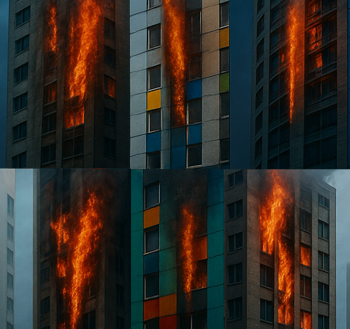Sterile touch points
[edit] Introduction
Today's facilities managers should be conscious of many requirements, including sustainability, energy efficiency, climate change, comfort, wellbeing and air quality.
The presence and spread of pathogenic microorganisms in our environment is still a problem and one that is exacerbated by the development of microbial resistance to antibiotics and disinfectants.
Some work environments give little consideration to employee health and cross infection; absenteeism and 'presenteeism' (sickness at work) which cost companies millions of pounds in lost productivity every year. It is claimed that 80% of colds, flu and sickness are caused by cross-contamination: surfaces that are contaminated in the workplace which help spread infection. This can include door handles, stair rails, lift control buttons, digital entry points, taps, keyboards, toilets etc.
Bacterium can double within 20 to 30 minutes, meaning that one bacterium turns into two, then two become four, leading eventually to the formation of millions of cells. Office environment temperatures and ventilation systems are ideal for growing and spreading bacteria, viral and fungal spores.
[edit] Reducing the risk
One solution is quite simple and environmentally friendly in application. All potential cross-contamination touch points in buildings can be coated with an invisible eco-varnish that eliminates bacterial adhesion, preventing their multiplication. These sterile touch points are not contaminated by air or infected individuals.
The ability to eradicate all dangerous gram negative and gram positive bacteria will depend on the degree of hydrophobic functionality of the microbiota barrier varnish, enabling the right surface tension to exist. The more hydrophobic bacteria cells adhere more strongly to hydrophobic surfaces, while hydrophilic cells strongly adhere to hydrophilic surfaces.
Coatings are easy to apply and last from six months to years, depending on surface abrasion.
Further details from Richard Thomas, CitroxBiosciences, [email protected]
[edit] Related articles on Designing Buildings Wiki
- Deleterious materials.
- Designing to reduce the chemical, biological and radiological vulnerability of new buildings (IP 7/15).
- Disposal.
- Hazardous substances.
- Health and safety.
- Method statement.
- Occupational health.
- Personal protective equipment.
- Planning (Hazardous Substances) Act 1990.
- Pollution.
- Risk assessment.
- Volatile organic compounds.
- Workplace exposure limits.
Featured articles and news
Government consultations for the summer of 2025
A year of Labour, past and present consultations on the environment, the built environment, training and tax.
CMA competitiveness probe of major housing developers
100 million affordable housing contributions committed with further consultation published.
Homes England supports Greencore Homes
42 new build affordable sustainable homes in Oxfordshire.
Zero carbon social housing: unlocking brownfield potential
Seven ZEDpod strategies for brownfield housing success.
CIOB report; a blueprint for SDGs and the built environment
Pairing the Sustainable Development Goals with projects.
Types, tests, standards and fires relating to external cladding
Brief descriptions with an extensive list of fires for review.
Latest Build UK Building Safety Regime explainer published
Key elements in one short, now updated document.
UKGBC launch the UK Climate Resilience Roadmap
First guidance of its kind on direct climate impacts for the built environment and how it can adapt.
CLC Health, Safety and Wellbeing Strategy 2025
Launched by the Minister for Industry to look at fatalities on site, improving mental health and other issues.
One of the most impressive Victorian architects. Book review.
Common Assessment Standard now with building safety
New CAS update now includes mandatory building safety questions.
RTPI leader to become new CIOB Chief Executive Officer
Dr Victoria Hills MRTPI, FICE to take over after Caroline Gumble’s departure.
Social and affordable housing, a long term plan for delivery
The “Delivering a Decade of Renewal for Social and Affordable Housing” strategy sets out future path.
A change to adoptive architecture
Effects of global weather warming on architectural detailing, material choice and human interaction.
The proposed publicly owned and backed subsidiary of Homes England, to facilitate new homes.
How big is the problem and what can we do to mitigate the effects?
Overheating guidance and tools for building designers
A number of cool guides to help with the heat.
The UK's Modern Industrial Strategy: A 10 year plan
Previous consultation criticism, current key elements and general support with some persisting reservations.
Building Safety Regulator reforms
New roles, new staff and a new fast track service pave the way for a single construction regulator.
























